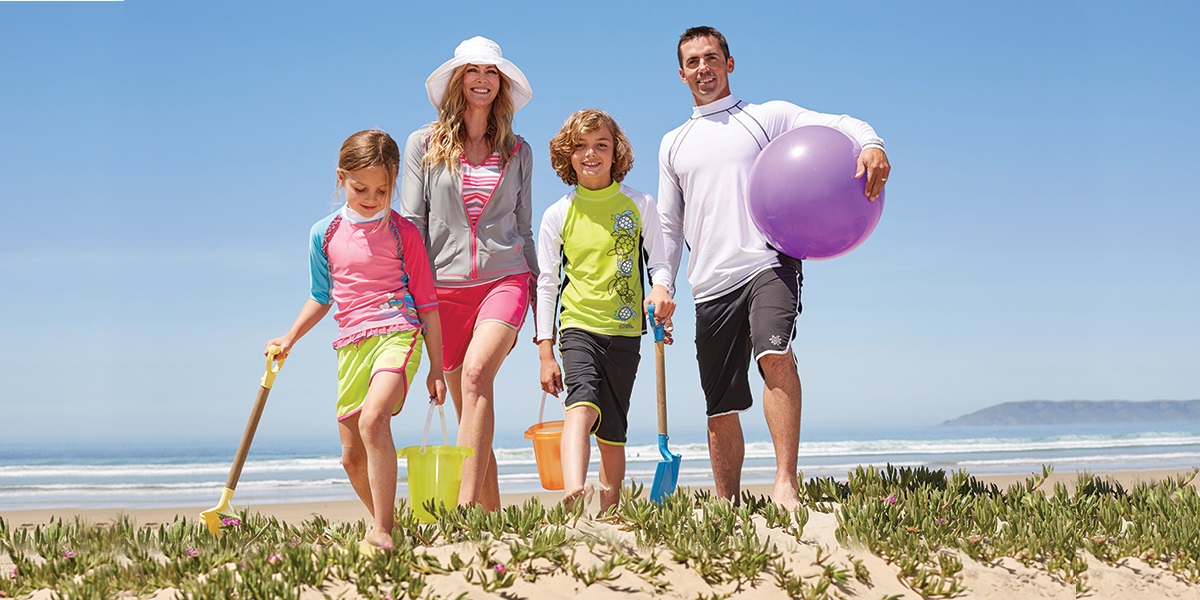Contact Us
The earlier and more regularly you encourage and reward sun-safe practices in your children, the more likely they will become sun-safe habits for a lifetime, and the less likely they will develop skin cancer in the future.
– Rhonda Sparks, CEO & Founder, UV Skinz
We believe that education and familiarity with sun protection should begin with the youngest members of the family. Here are some tips on how you can encourage sun-safe habits in your family that we hope will last a lifetime.
Make wearing sun protection a rule in your household.
A great way to get a rule to stick is to offer incentives or rewards for sun-safe behavior. When your child puts on their own sunscreen without you asking or dons their sun protective shirt over a short sleeve cotton tee before outside play, praise him or her because this is AWESOME! If praise isn’t enough motivation, a small treat or some special time with mom might do the trick.
Lead by example.
Wear sun protective clothing, wide-brimmed hats and broad spectrum sunscreen, and seek the shade when UV radiation is strongest (generally between 10 AM – 4 PM). Not only will you be protecting yourself from damaging UV rays (aka premature wrinkles, sun spots and skin cancer) but you will be teaching your children to do the same.
Teach your children the importance of checking their skin.
Encourage them to practice skin checks on a regular basis for any suspicious changes. The Skin Cancer Foundation has some great resources on early detection and how to perform a self-skin check. An easy way to remember what to look form when doing a skin check is the ABCDE’s of Melanoma:
A – Asymmetry: The two sides will not match.
B – Border: Often the borders of a melanoma are uneven. Edges may be jagged or irregular.
C – Color: A melanoma may have a number of different shades of brown, tan and black, or may even be blue or red.
D – Diameter: Melanomas tend to be larger than the size of a pencil eraser (1/4 inch) but may be smaller if detected early enough.
E – Evolving: If you notice a mole or skin lesion change at all, whether it be in size, color, shape, elevation, bleeding or itching.
Keep in mind, melanoma in children can look differently than what’s described above and may not look like a mole at all. If you see anything that looks out of the ordinary, trust your motherly instincts and get your child checked by a dermatologist right away.
To learn more about UV Skinz’s mission, or to shop our line of Sun Protective Clothing for children and adults, visit www.uvskinz.com.
